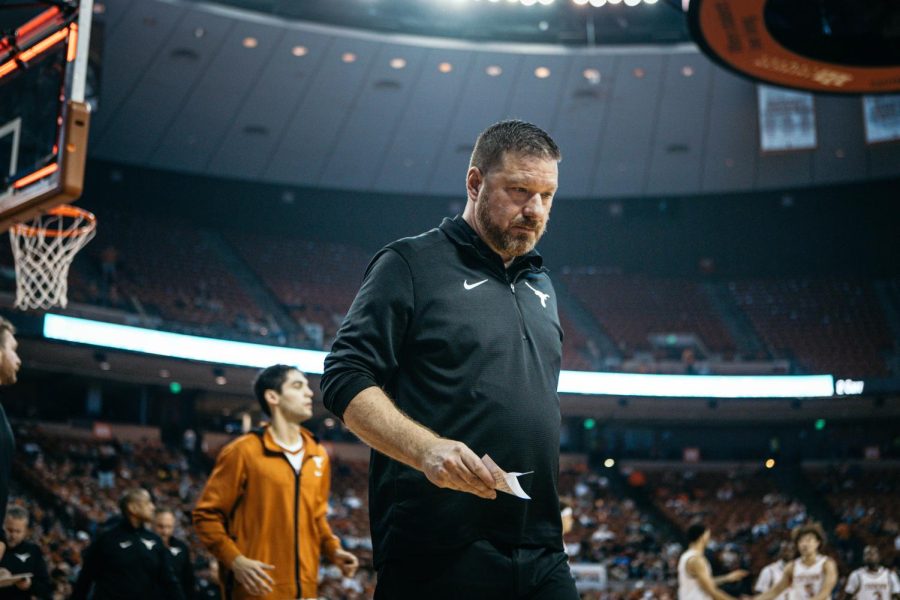Texas basketball struggles after weak non-conference schedule
January 25, 2022
Editor’s note: This article was originally published in the Jan. 21, 2022 flipbook.
Texas head coach Chris Beard made it clear from the beginning of his tenure that he wanted to build a team capable of competing for a national title in his first year. But now, Texas, 3–3 in conference play, is in trouble.
The Longhorns are about to enter the toughest stretch of their season, with back-to-back games against No. 18 Texas Tech, No. 15 Iowa State, No. 7 Kansas and No. 5 Baylor. In the competitive Big 12 conference, two wins over Kansas State seemed vital to keep Texas in contention for the conference title and a comfortable seed in the NCAA tournament.
Texas’ 3–3 start in conference play could be attributed to hosting a weak non-conference schedule. According to KenPom’s College Basketball Ratings, Texas’ average non-conference opponent ranking is 228, the lowest in the conference. KenPom provides statistics and ranks college basketball teams based on factors such as strength of schedule and offensive efficiency. The average non-conference opponent ranking among Big 12 teams is 186.
The non-conference schedule was not enough to prepare Texas for the talent and physicality in the Big 12.
“You can’t get too high or too low,” Beard said after the Kansas State loss. “Nothing gets under my skin.”
Because of an incomplete roster in the offseason, Texas’ schedule consisted of smaller, in-state schools with just a few bigger names.
“We had some challenges and obstacles putting (the non-conference schedule) together, but we feel good about where we (have) it,” Beard said last September. “This schedule was put to (the) course over time. It wasn’t a schedule where we knew the team that we had.”
The final schedule was heavy on both ends of the spectrum without much in the middle. Texas was the visiting team at No. 1 Gonzaga and No. 29 Seton Hall, both notoriously hostile environments. With the exception of Stanford, the rest of the non-conference opponents were not close to being competitive.
The first three games of the season, against a low-ranked Houston Baptist, No. 1 Gonzaga and No. 193 Northern Colorado, demonstrated how lopsided the schedule was in strength.
Playing opponents that were below Texas’ skill level did not provide the team with enough high-stakes opportunities or stress tests early in the season. Now the Longhorns are still working out imperfections in the turnover game and offensive speed after one-third of conference play has passed. So far, Texas’ offensive pace ranks 351 of 358 Division I teams, last in the Big 12, according to KenPom.
The absence of more competitive teams on the non-conference schedule also stripped Texas of opportunities to make a statement win. Competitive non-conference wins can make a helpful impression on the NCAA Tournament selection committee come March. But Texas has none. Even though teams like Oklahoma and West Virginia are unranked, both have ranked wins. The Longhorns have their work cut out for them, and they know it.
“The Big 12 is definitely the best conference in basketball this year, so no matter who you’re playing, it’s never easy,” senior guard Marcus Carr said. “We knew this was going to be a journey for us. We’re not stopping now (and) we’re not quitting now.”












